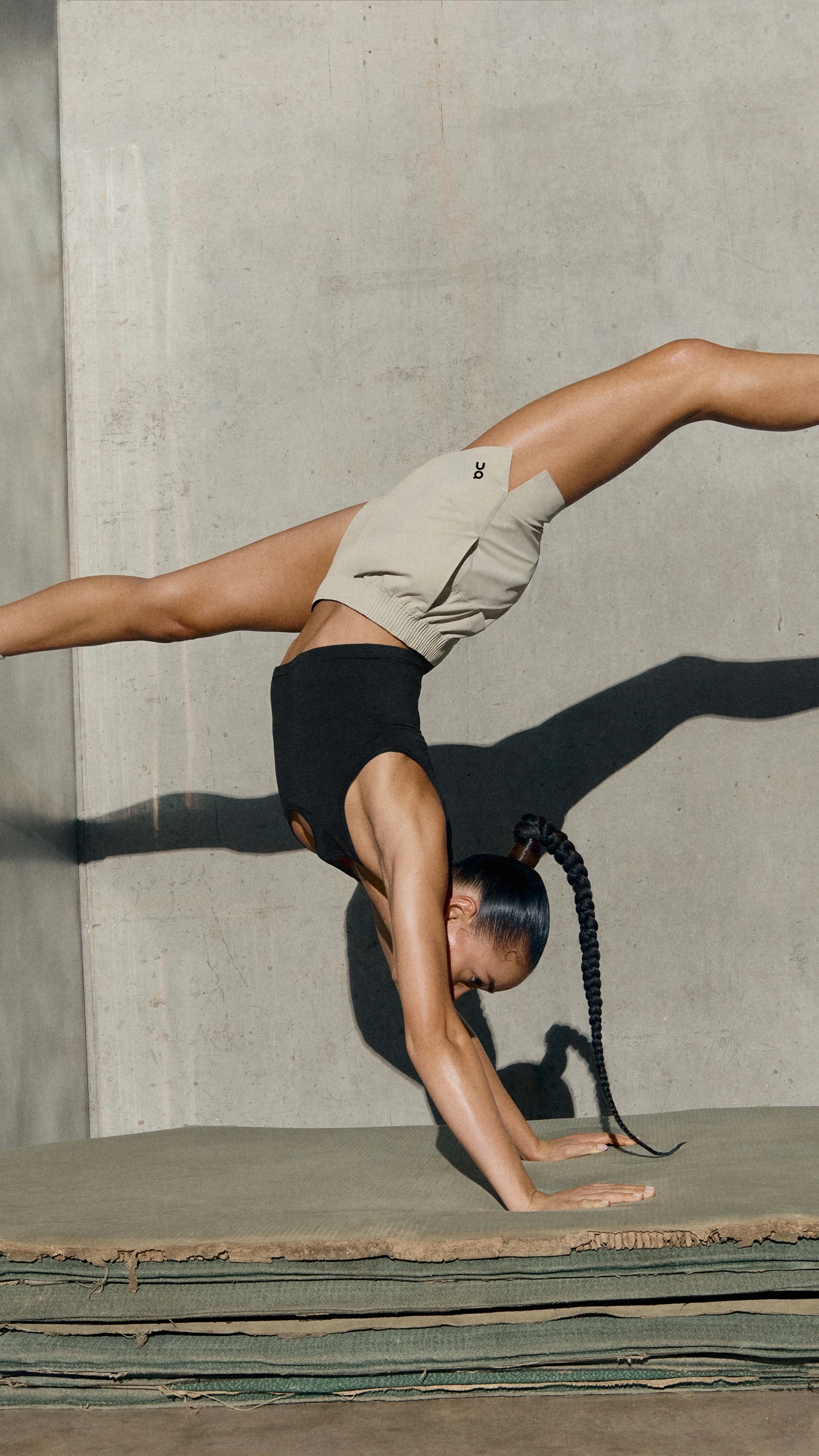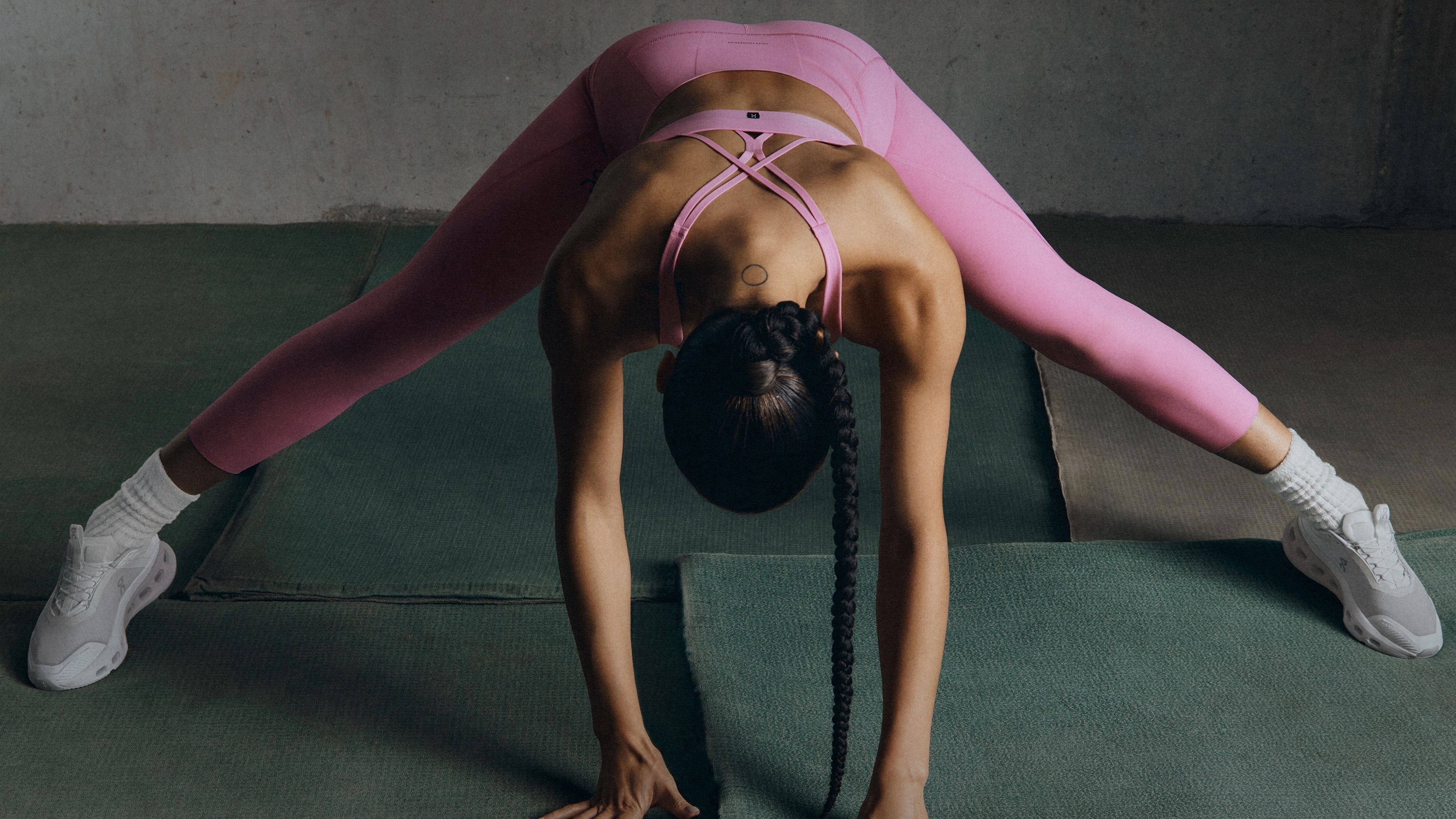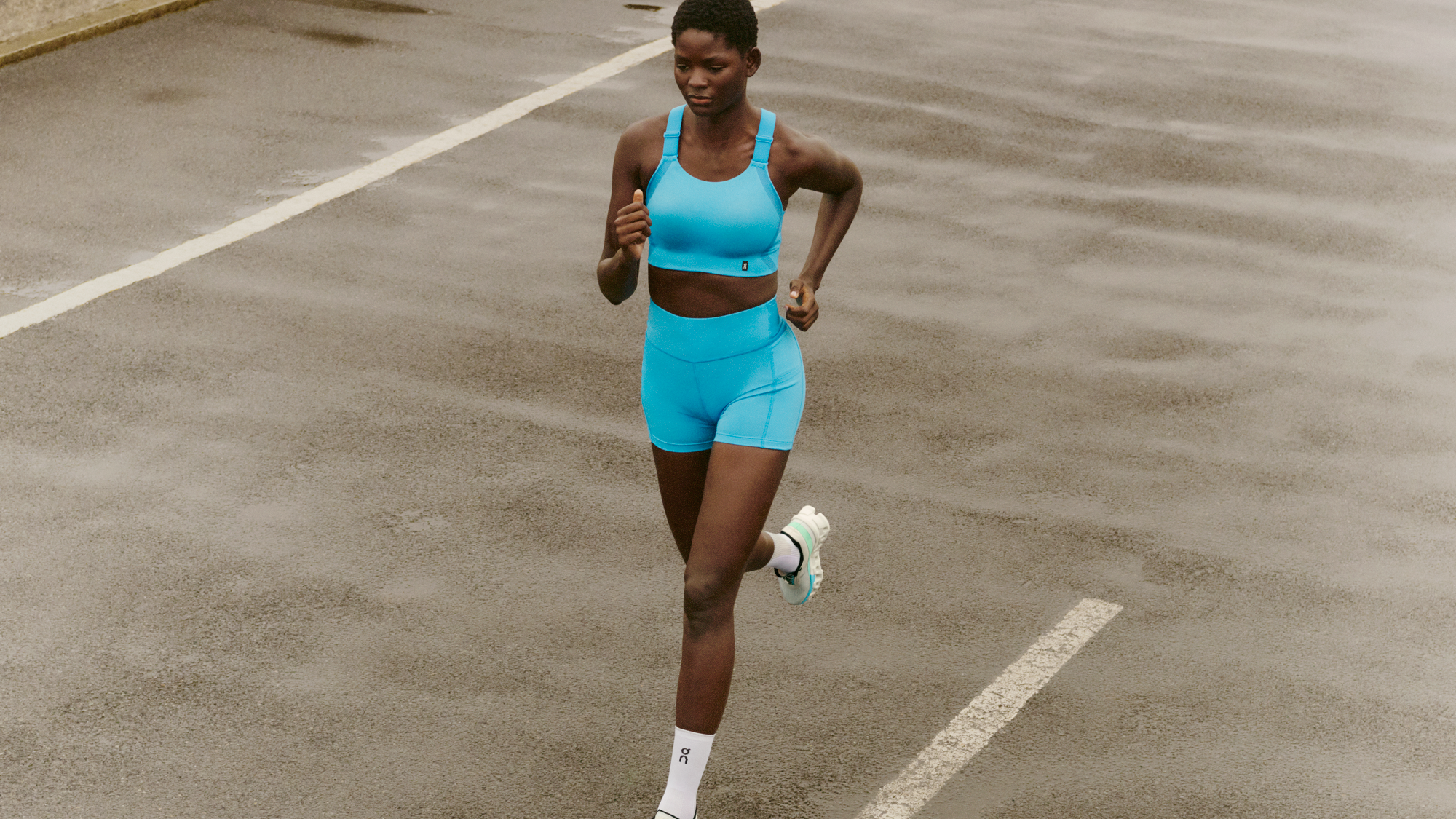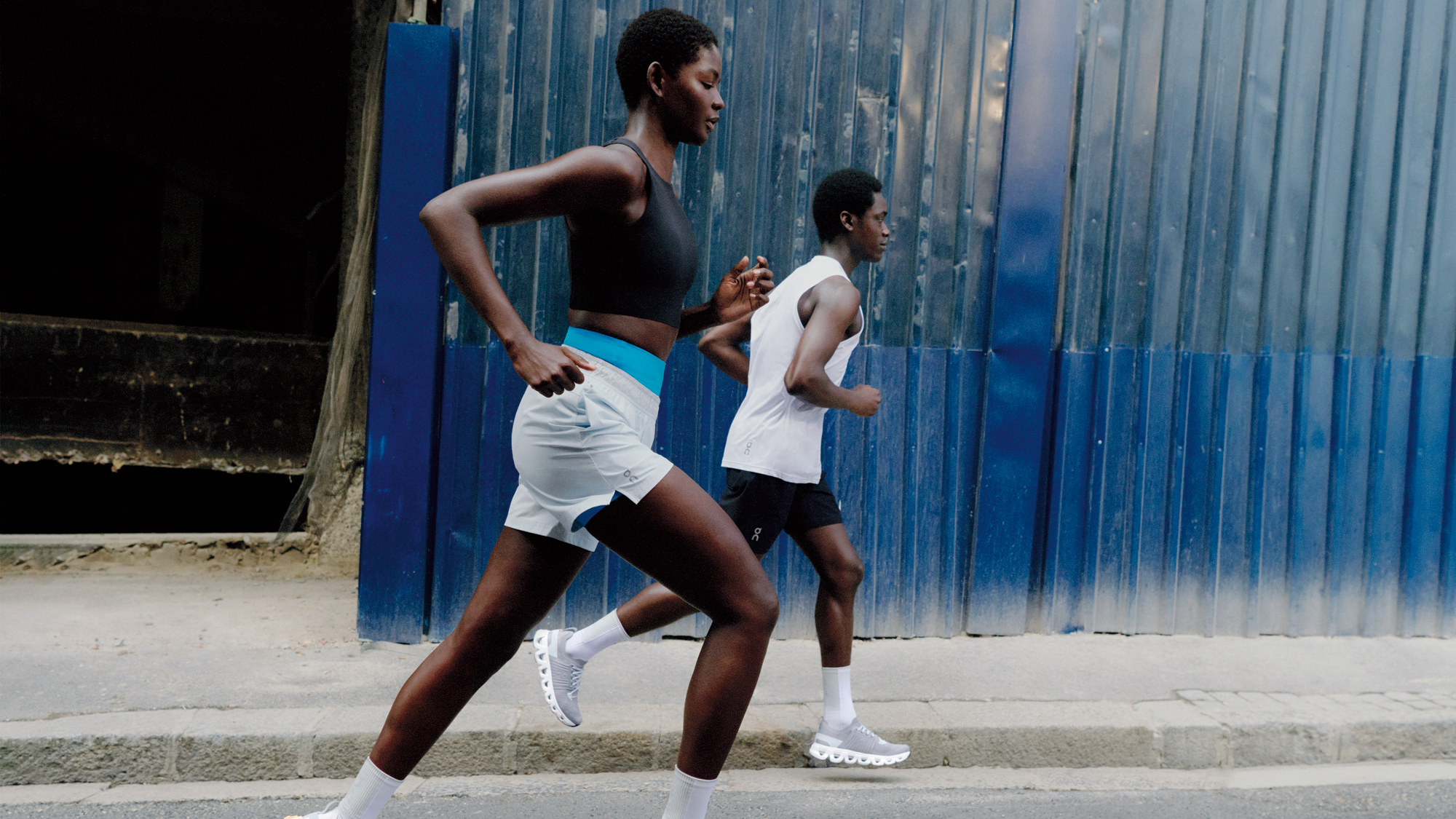

A good sports bra feels barely there, but provides serious support where it counts.


Maybe you’re holding steady in tree pose. Powering through the final mile. Lining up a serve. Your sports bra should be the last thing on your mind. The right bra feels like a second skin – soft, lightweight and built for comfort. “Wearing a good fitting and supportive sports bra can help limit breast movement and therefore breast pain caused by bounce,” says Natasha Chung, Apparel Development Lead at On. “So you can focus more on your training and performance.”
Here’s what to look for in a well-fitting sports bra so you can move confidently and train at your best.
Start with the activity, then choose the sports bra. Not every workout demands the same level of support, and not everyone needs the same bra.
For instance, yoga doesn’t place the same demands on your body as a trail run in the cold. Activity type, environment and chest size all influence the kind of bra you need.
“You shouldn’t feel held back by your sports bra or unable to move freely,” says Chung. “As a coach and racer, I always consider the amount of time that I will be wearing it.” A good fit should never cause discomfort or chafing, no matter how long you’re in motion.
For movement with minimal bounce – like yoga, pilates or stretching – light support is often enough. Look for gentle compression and minimal padding. The Pace Bra, Studio Bra and Core Bra are good picks for comfort without restriction. Prefer a little more hold? Keep reading.
Activities: Strength training, yoga, walking


For workouts like cycling, hiking, or strength training, opt for a sports bra with more structured support.
Styles like the Train Bra combine compression with added hold to help minimize movement – without being too restrictive. Look for wider straps and a supportive underband for extra stability, no underwire necessary.
Activities: Cycling, hiking, dancing
Whether you’re running, jumping or pushing your limits, support is everything. High-impact movement calls for a bra that holds firm without holding you back. Look for moisture-wicking fabric, firm compression and a secure fit that stays put – like the Pace Pocket Bra. The Performance Flex Bra is another good option that provides serious support with defined cups and firm compression, keeping you comfortable through every hard effort. Activities: Running, aerobics, mountain biking
Note: If you wear a DD cup or above, higher support may be helpful even for low-impact workouts like yoga. “As long as you are comfortable and not too restricted by your bra, I believe there is no such thing as too much support,” says Chung. Go with what feels best for you.


The right sports bras are about more than just comfort – they’re also about support, confidence and being able to move without distraction. Fit comes down to the finer details: the band, cups and straps all work together. If one element is off, the whole bra can feel wrong. Here’s how each part should fit and feel.
Think of the band as your bra’s foundation, and where most of the support comes from. It should sit firmly (but comfortably) just below your bust and lie flat against your ribcage without digging in.
Too tight, and you risk chafing or shortness of breath. Too loose, and it won’t provide the support you need. A quick fit check: you should be able to slip two fingers under the band with ease.
What to look for: A snug, secure fit that stays in place. No pinching or riding up.
The cups are there to hold and support, either individually or with a compressive fit, depending on the style. “The cups should sit comfortably around the breast tissue at the under arm and neckline area and not press into the soft tissue,” says Chung. If the fabric wrinkles, the cups might be too big. What to look for: Cups that enclose your chest, lie flat against your skin and create a smooth silhouette with no gaps or spillage.
Straps help stabilize, but they shouldn’t be doing all the work. If they’re digging in or slipping, the fit’s off somewhere else (likely the band). For high-impact sessions or added support, opt for wider straps. They help distribute pressure more comfortably across your shoulders. What to look for: Straps that stay in place without pinching or sliding. Adjustable is ideal. The wider, the better when you’re going all out.
Fabric matters more than you might expect. Look for moisture-wicking, breathable materials that keep you dry and comfortable, even during the most intense sessions. The fabric should feel gentle against your skin, never scratchy or irritating. Bonus points if it’s designed to regulate temperature, so you can stay comfortable during workouts in the heat or cold.
Even the best design won’t perform if the cups don’t fit properly. Gaping, loose fabric or lack of coverage are signs the bra isn’t doing its job – and can lead to rubbing or discomfort once you start moving.
A good fit fully contains your chest with smooth, secure coverage that doesn’t pinch or leave space. No overflow. No wrinkles. Just solid support that stays with you through every move.
Tip: For more coverage and control, try a high neckline style like the Endurance Bra.
“It’s helpful to check what level of support the sports bra is advertised for, and if it aligns with your expectations,” says Chung. “Be wary that not all bras that look like sports bras are actually supportive enough for training or running.”
Before you commit, try it on and move like you would during a workout. Jump, jog, swing your arms. Feel for any pinching, slipping, or a band that rides up. A quick movement test can tell you more than any label.
Unsure of your size? Knowing your band and cup size gives you a solid foundation and makes trying on styles way more efficient.
“I always recommend going to a store to get a bra fitting or at least try it on before purchasing your first sports bra,” says Chung. “All bodies are different, and the best way to understand what works for you is to try products on and feel if they truly fit.”


Bust Measure around the fullest part across bust points, keeping the tape horizontal.
Underbust Relax and measure around the top of your ribcage, just under your bust.
For more sizing and fit details, visit the specific product in our sports bra’s page. Sports bras often use general sizes (S–XL), sometimes with cup-specific options.
The best sports bra is the one you forget you’re wearing. Whether you’re chasing a PB or climbing higher than ever, your bra should be the last thing on your mind. Explore our collection of sports bras built for comfort, confidence and lasting support – so you can move freely, breathe deeply and focus on what matters most.